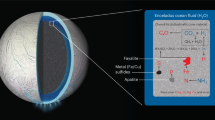“I must say to you that we do not want in the least to conquer outer space. We want to expand the Earth toward its boundaries. We do not know what to do with other worlds. We do not need other worlds…. Humans need humans!”
From Andrei Tarkovsky’s film Solaris
Abstract
Several decades ago, science-fiction writers and futurologists predicted that in the early 21st century humankind would begin to inhabit other planets of the solar system and their satellites. In reality, interplanetary flights and the colonization of extraterrestrial territories have proved to be more intractable tasks than it had seemed earlier, and this difficulty has led to a noticeable drop in interest in these problems. However, it follows from the article published below that we should not defer the problem of expanding the human living space beyond the Earth to future generations. The first steps along this difficult path can and must be made today, because, first, there are no fundamental technological obstacles and, second, even significant financial investments are justified when dealing with the problem of preserving humankind, which is endangered by numerous terrestrial and extraterrestrial threats.
Similar content being viewed by others
References
A. Bond et al. (Project Daedalus Study Group), Project Daedalus: The Final Report on the BIS Starship Study (British Interplanetary Society, London, 1978).
NASA SP-413: Space Settlements–A Design Study, Ed. by R. D. Johnson and C. Holbrow. http://settlement.arc.nasa.gov/75SummerStudy/Design.html. Cited August 19, 2016.
The Asteroid–Comet Hazard: Yesterday, Today, Tomorrow, Ed. by B. M. Shustov and L. V. Rykhlova (Fizmatlit, Moscow, 2010) [in Russian].
S. J. Bus and R. P. Binzel, “Phase II of the small mainbelt asteroid spectroscopic survey: A feature-based taxonomy,” Icarus 158, 146 (2002).
A. S. Koroteev, V. N. Akimov, and A. A. Gafarov, “The design of and prospects for space nuclear power engineering in Russia,” Polet, No. 7 (2007).
G. G. Raikunov, V. A. Komkov, V. M. Mel’nikov, and B. N. Kharlov, Centrifugal Frameless Large-Sized Space Structures (Fizmatlit, Moscow, 2009) [in Russian].
http://neo.jpl.nasa.gov/cgi-bin/nhats. Cited May 23, 2013.
L. V. Kirensky, J. I. Gitelson, I. A. Terskov, et al., “Theoretical and experimental decisions in the creation of an artificial Ecosystem for human life-support in space,” Life Sci. Space Res. 9, 75 (1971).
A. G. Degermendzhi and A. A. Tikhomirov, “Designing artificial closed landand space-based ecosystems,” Herald Russ. Acad. Sci. 84, 124–130 (2014).
G. L. Matloff, “NEOs as stepping stones to Mars and main-belt asteroids,” Acta Astronaut., No. 68 (2011).
Author information
Authors and Affiliations
Corresponding author
Additional information
Original Russian Text © S.V. Antonenko, S.I. Bartsev, A.G. Degermendzhi, 2015, published in Vestnik Rossiiskoi Akademii Nauk, 2015, Vol. 85, No. 10, pp. 885–895.
Rights and permissions
About this article
Cite this article
Antonenko, S.V., Bartsev, S.I. & Degermendzhi, A.G. An artificial habitat for colonizing the solar system. Her. Russ. Acad. Sci. 85, 402–411 (2015). https://doi.org/10.1134/S1019331615050056
Published:
Issue Date:
DOI: https://doi.org/10.1134/S1019331615050056




